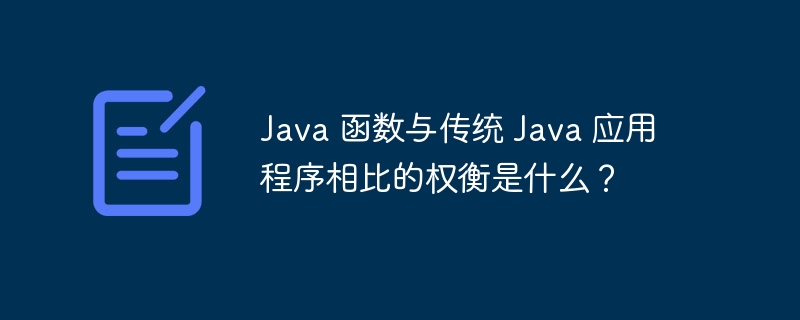
Java functions are pay-per-use, auto-scaling, simple to deploy, and require no maintenance, whereas traditional Java applications involve fixed server costs, require manual scaling, are complex to deploy, and require regular maintenance. Therefore, for on-demand services and ad-hoc tasks, Java functions are more cost-effective and scalable, while for applications that need to run continuously and are highly customizable, traditional Java applications are more suitable.

Introduction
Java functions are deployed in serverless Architecturally reusable chunks of code, whereas traditional Java applications are standalone applications running on the server. There are important trade-offs between the two, including cost, scalability, deployment, and maintenance.
Cost
Scalability
Deployment
Maintenance
Practical case
Use Java functions to create on-demand image processing services
Requirements: Create a service, Triggered when an image is uploaded, automatically resizes the image and stores it in cloud storage.
Java function implementation:
import com.cloud.functions.CloudEvent;
import com.cloud.functions.Context;
import functions.eventpojos.PubsubMessage;
import java.nio.charset.StandardCharsets;
public class ImageProcessor {
public void processImage(CloudEvent event, Context context) {
PubsubMessage message = PubsubMessage.fromData(event.getData().toString(StandardCharsets.UTF_8));
// 获取 message 的数据和属性
// ...
// 执行图像处理操作
// ...
}
}Use traditional Java application to create a real-time chat server
Requirements: Create a chat server that users can join and receive Messages sent by other users.
Traditional Java application implementation:
import java.net.ServerSocket;
import java.net.Socket;
import java.io.BufferedReader;
import java.io.BufferedWriter;
public class ChatServer {
public static void main(String[] args) {
try {
// 创建一个服务器套接字,并监视特定端口
ServerSocket serverSocket = new ServerSocket(8080);
while (true) {
// 等待客户端连接
Socket clientSocket = serverSocket.accept();
// 处理客户端连接
// ...
}
} catch (Exception e) {
e.printStackTrace();
}
}
}The above is the detailed content of What are the trade-offs of Java functions compared to traditional Java applications?. For more information, please follow other related articles on the PHP Chinese website!
